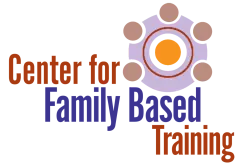Power is a highly misunderstood and loaded word, but one highly relevant to the therapeutic relationship. A power differential is always present in the therapeutic relationship, and can be used effectively, ineffectively, or even abused. The ‘right’ use of power in the therapeutic relationship involves developing an awareness of the power differential, the implications for clients and families served, and a thoughtful application of our ethical codes. This course, comprised of five brief webinars, challenges clinicians to rethink the definition of power and dispel myths and biases around the word that can hinder the ethical, right use of power in therapy.
This is an edited version of a live-streamed training provided to therapists working in a community-based setting. You will hear contributions from some of the participants’ who attended this training (with consent).
This is a Beginning Level course. The target audience is behavioral health professionals working with children and adolescents.
Objectives:
As a result of participating in this training, participants will be able to:
- Identify common myths and biases about power that can undermine the effectiveness of individual and family therapy
- Identify common ways therapists’ underuse, overuse, misuse and abuse power with clients and families
- Identify the link between the ‘right’ or ethical use of power in relation to therapeutic alliances, engagement in treatment, and positive outcomes in individual and family therapy
This course uses an online distance-learning self-paced format. It includes recorded audio, recorded video-based webinars, and selected readings. There are post-tests to ensure comprehension of the material. Participants can communicate with the instructors via the online moodle interface. Real-time communication with the instructor in our online, self-paced distance learning courses is not possible. However, participants can send an email to the instructor via the online moodle interface within the course and expect to receive a response within 48 hours. All course content, including post-tests, should take approximately 1.5 hours to complete.
Frequently Asked Questions
Visit our Self-Paced, Online Continuing Education Policies & FAQs for additional information regarding the CFBT online learning center, accommodations for disabilities, reporting problems with the course, instructions for viewing webinars, etc.

